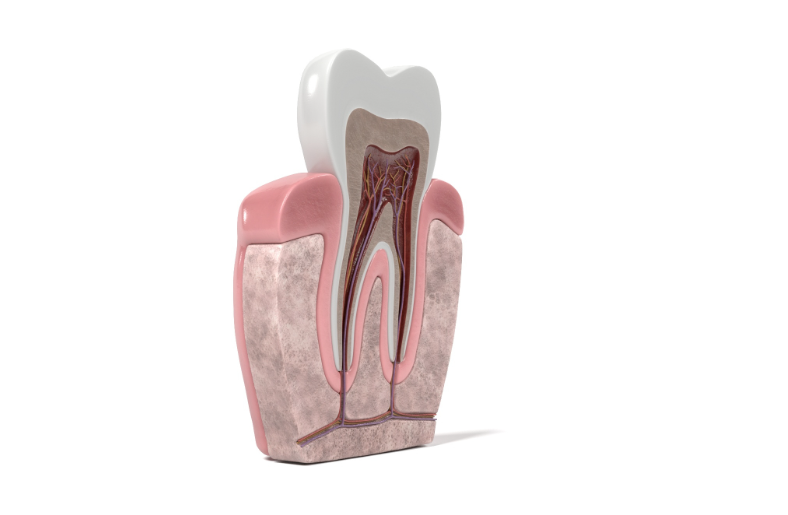
As children, many people may have been threatened by their parents, "Don't eat candy, or you will eat your teeth in your sleep!"
But are the teeth really "eaten" by bugs?
The tooth is divided into two parts: the crown and the root, and the joint of the crown and the root is called the neck of the tooth. The outermost layer of the crown contains a layer of enamel, also known as "enamel", which is the hardest material in the human body. The enamel surrounds the dentin of the crown.
The innermost part of a tooth is the pulp, a soft tissue containing nerves and blood vessels.
The hard enamel on the surface of healthy teeth has a strong ability to resist acid and alkali corrosion.
Due to the acid production of bacteria living on the surface of the tooth, the tooth corrodes, and the hard structure of the outer layer of the tooth is destroyed to form "caries".
Take eating sweets as an example, the microorganisms in the mouth can use sucrose to synthesize polysaccharides, which can form a strong sticky bacterial film (plaque), this bacterial film sticks to the surface of the teeth, it is not easy to remove, bacteria may multiply and produce some organic acids and other products, thus destroying the teeth.
Dental caries occur over time.
Early caries often go unnoticed because they have no specific symptoms, but small and yellowish brown spots on the surface of tooth enamel.
As the decay progresses deeper into the dentin surface, a black hole may appear on the surface of the tooth.
It is generally painful to eat sugar, and the pain is reduced after gargling.
If the caries continue to expand to the depth, reach the dentin middle or close to the pulp, the patient will suffer from cold and hot temperature stimulation.
When caries erode to the deep dentin, food residues are more likely to remain in the cavity, so that bacteria can multiply. Because the cavity is relatively close to the pulp, the bacteria and toxins produced by the bacteria in the cavity are easy to penetrate into the pulp tissue, resulting in more severe pain, which may lead to pulpitis, periapical inflammation, etc., and even eventually cause tooth loss.
The earlier we treat cavities, the better we can preserve our natural teeth.
Treatment before tooth erosion is more effective.
Tooth decay is caused by four necessary factors, namely teeth, food, bacteria, time.
The longer food remains on the surface of the tooth, the more likely it is that bacteria will erode the tooth.In this process, what we can do is to reduce the time that bacteria stay in the mouth, that is, brush your teeth in the right way after eating food every time.
Children about 6 months should begin to clean the mouth, parents can use a toothbrush or gauze dipped in water to clean; When deciduous teeth develop, brush your child's teeth with toothpaste that can be swallowed, and consider using toothpaste with less fluoride after the age of 3.
After 3 and a half years of age, the child's milk molar teeth can be sealed, and the first molar (6 to 7 years old) and the second molar (11 to 12 years old) should also be sealed after the complete eruption. It is best for children to use a children's toothbrush.
If you want to thoroughly clean your teeth, you can't ignore the contact between the teeth. Experts recommend that adults floss to remove food debris and soft dirt between the teeth before brushing.
Fluoride can inhibit the growth of cariogenic bacteria, reduce the formation of acid in plaque, reduce the acid solubility of teeth and promote remineralization. Therefore, Hou suggested using fluoride toothpaste to improve the anti-caries performance of teeth.

